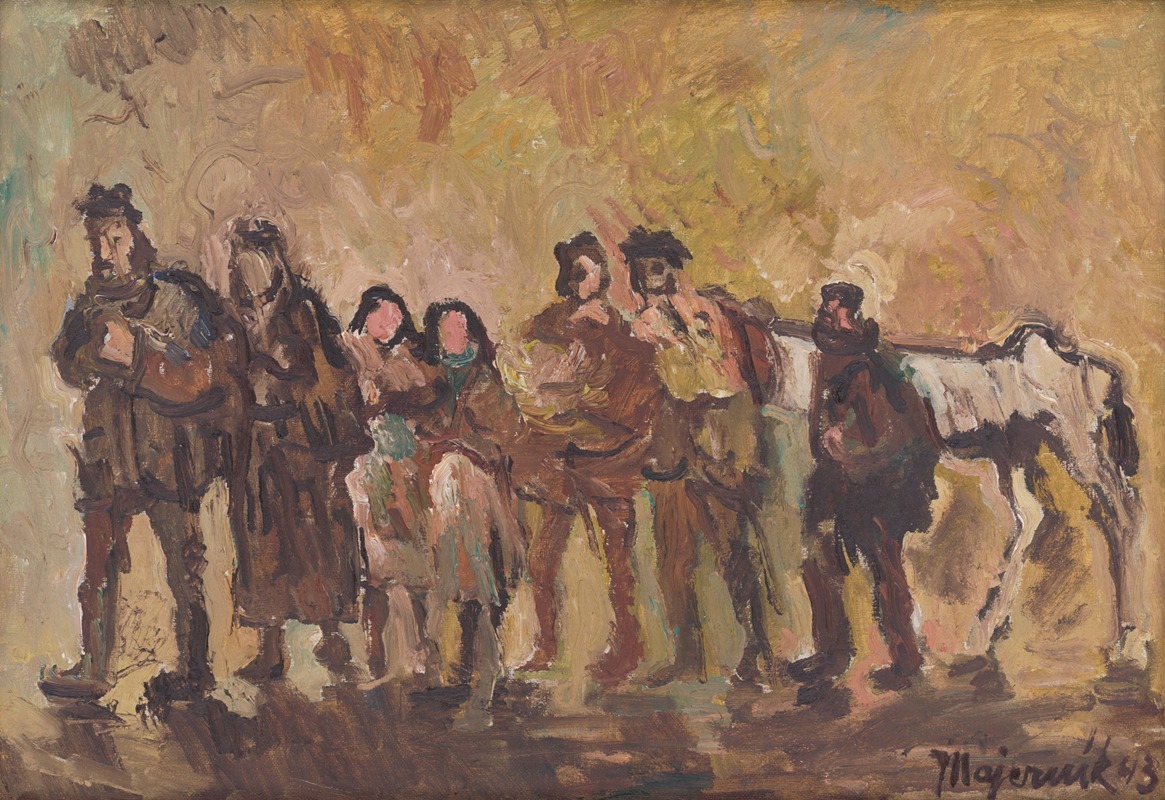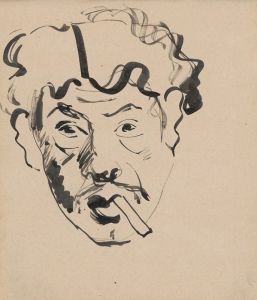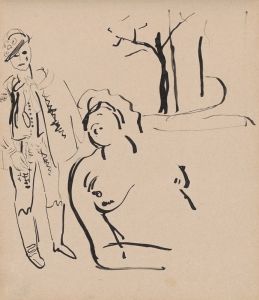
Exiles
A hand-painted replica of Cyprián Majerník’s masterpiece Exiles, meticulously crafted by professional artists to capture the true essence of the original. Each piece is created with museum-quality canvas and rare mineral pigments, carefully painted by experienced artists with delicate brushstrokes and rich, layered colors to perfectly recreate the texture of the original artwork. Unlike machine-printed reproductions, this hand-painted version brings the painting to life, infused with the artist’s emotions and skill in every stroke. Whether for personal collection or home decoration, it instantly elevates the artistic atmosphere of any space.
Cyprián Majerník was a Slovak painter known for his poignant and expressive works, often reflecting the socio-political turmoil of his time. One of his notable paintings, "Exiles," captures the essence of displacement and the emotional weight carried by those who are forced to leave their homeland. Majerník, who lived from 1909 to 1945, was deeply influenced by the events leading up to and during World War II, and his works often convey a sense of melancholy and empathy for the human condition.
"Exiles" is a powerful representation of the themes of loss, longing, and the search for identity. The painting depicts a group of individuals, presumably refugees or displaced persons, journeying through a barren landscape. The figures in the painting are rendered with a sense of vulnerability and despair, their postures and expressions conveying the heavy burden of their circumstances. Majerník's use of color and composition enhances the emotional impact of the scene, with muted tones and stark contrasts underscoring the bleakness of their situation.
Majerník's style is often associated with expressionism, characterized by its focus on representing emotional experiences rather than physical reality. In "Exiles," this is evident in the exaggerated forms and dramatic use of light and shadow, which serve to heighten the emotional intensity of the painting. The landscape itself, desolate and unwelcoming, mirrors the internal state of the exiles, emphasizing their isolation and uncertainty about the future.
The historical context of Majerník's work is crucial to understanding its significance. During the 1930s and 1940s, Europe was engulfed in political upheaval, with the rise of totalitarian regimes and the outbreak of World War II leading to widespread displacement and suffering. As a Slovak artist, Majerník was acutely aware of the impact of these events on Central and Eastern Europe, and his work often reflects a deep empathy for those affected by war and persecution.
"Exiles" can be seen as a universal commentary on the plight of refugees, transcending its specific historical context to resonate with audiences across different times and places. The painting speaks to the enduring human experience of displacement and the resilience required to endure such hardships. Majerník's ability to convey complex emotions through his art has earned him a lasting place in the canon of European painters, and "Exiles" remains a poignant reminder of the personal toll of political conflict.
Cyprián Majerník's contributions to art extend beyond his thematic focus; his technical skill and innovative approach to composition and color have also been widely recognized. Despite his relatively short life, Majerník left behind a body of work that continues to be studied and appreciated for its emotional depth and historical relevance. "Exiles" stands as a testament to his ability to capture the human spirit in the face of adversity, making it a significant piece in the study of 20th-century European art.


















